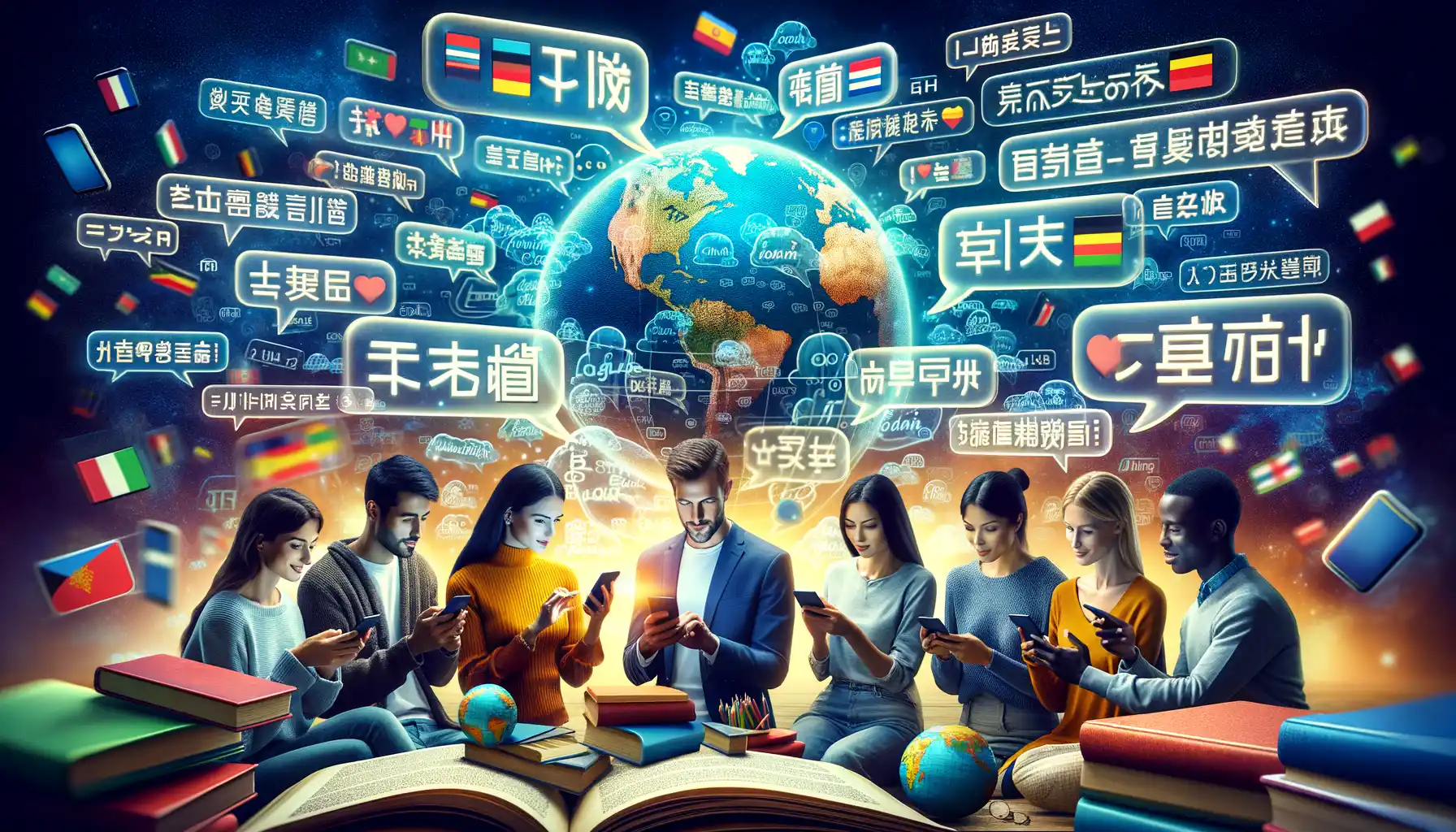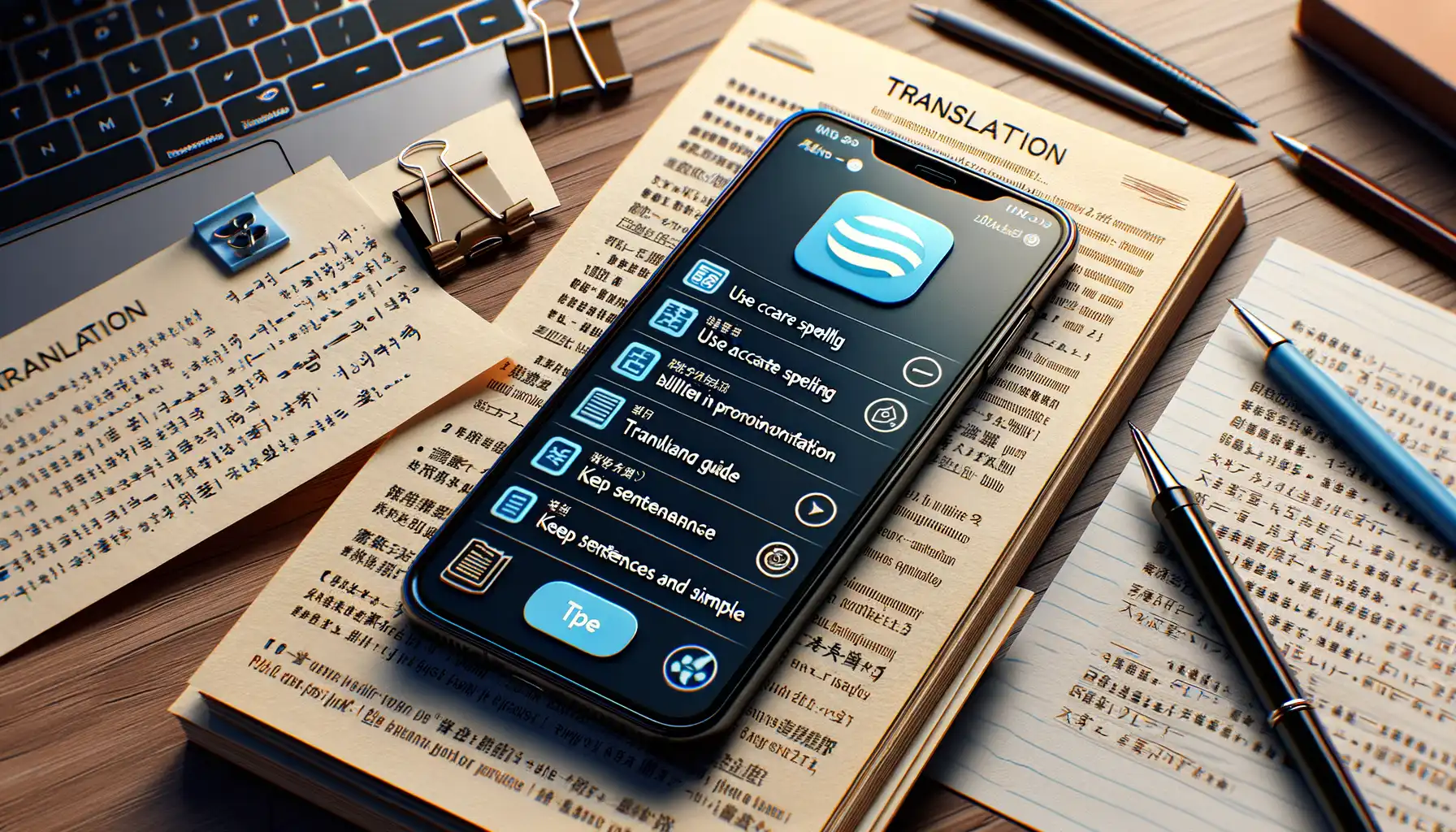Must-Have Translation Apps for Global Student Communities
Catch a CheaterKey Features to Look for in Translation Apps
Essential Features That Make a Translation App Shine
When hunting for the perfect translation app, you’re not just downloading any random tool—you’re looking for your pocket-sized interpreter, ready to tackle language barriers in a heartbeat. But not all apps are created equal, so what makes one *truly* stand out? Let’s break it down.
First, look for apps with real-time voice translation. Imagine standing in a bustling Parisian café or a vibrant Tokyo marketplace, needing to order food or ask for directions. Apps like these transform your spoken words into another language instantly, making real-world conversations effortless.
Next stop: offline functionality. Picture this—you’re wandering through a remote village with spotty Wi-Fi, trying to translate the menu at a charming local restaurant. A good translation app doesn’t ghost you when the internet fails.
Here’s a quick list of must-haves:
- Camera-based translation for deciphering foreign signs or menus on the go.
- Customizable phrasebooks to save time and access key phrases you often use.
- Language learning integration, because why not pick up some vocabulary along the way?
Choose wisely—it’s not just an app, it could be your global BFF!
Top Translation Apps for Students Abroad

Your Passport to Connection: Translation Apps That Shine
Picture this: you’ve just touched down in a bustling city where the street signs are hieroglyphs to your eyes, the café menus might as well be novels, and you’re desperate to make friends but can’t quite crack the code of the local lingo. Enter the magic of translation apps—your ultimate sidekick for making life abroad not only easier but infinitely more exciting.
Some standout contenders? Let’s dive into a few that students swear by:
- Google Translate: The Swiss Army knife of translation apps. Type, speak, snap a photo—boom, instant understanding in over 100 languages.
- DeepL: For when you need nuanced translations (looking at you, essay procrastinators). It’s fast, accurate, and scarily good with context.
- iTranslate: A lifesaver for live conversations. Its voice recognition feature is like having your own personal interpreter in your pocket.
Each app has its vibe. Whether you’re deciphering what “kimchi jiggae” is or bonding over slang with locals, these tools go beyond words—they open doors to experiences. Who knew a download could feel like travel superpowers?
Linguistic Lifelines for Every Situation
From the classroom to the corner bakery, these apps are built for whatever adventure today throws your way. Think about your next group project: someone’s pitching ideas in Spanish, while another chimes in with Mandarin? Pop open Microsoft Translator. Its group chat feature translates in real-time—and no one misses a beat.
Even awkward moments get smoother. Forgot how to say thank you properly in Korean? With SayHi, whisper into your phone, and it’ll politely do the talking for you. Feeling fancy? Papago caters to Asian languages like a champ, so ordering Pad Thai just got a whole lot tastier.
Translation tech isn’t just helpful; it’s empowering. These apps don’t just bridge communication gaps; they pave the way for cultural brilliance.
How Translation Apps Enhance the Global Learning Experience

Breaking Language Barriers, One Tap at a Time
Imagine this: You’re strolling through the bustling streets of Tokyo, spotting a quaint café with a menu written entirely in Japanese. You want to order some matcha tea and sweets, but you’re stuck deciphering unfamiliar characters. Enter a trusty translation app, like your pocket-sized interpreter, instantly bridging the gap.
For global learners, these apps do more than just decode menus—they’re a passport to vibrant, cross-cultural engagement. In the classroom, students can translate dense academic papers or collaborate seamlessly with international peers. Picture an engineering student from Brazil collaborating with a study group in Germany, discussing thermodynamics without awkward pauses or misunderstandings.
- Real-time translations make group discussions smoother and collaborative projects truly global.
- Intelligent voice recognition helps you pronounce words correctly, sparking confidence during presentations.
Turning Awkward Moments into Opportunities
Language hiccups can be nerve-wracking, especially for shy students. But here’s the beauty: with tools like camera translation, you can scan street signs, textbooks, or handwritten notes to decode them on the spot. Suddenly, the daunting becomes doable.
Translation apps don’t just translate words; they unlock new worlds. They empower students to discover hidden gems, forge meaningful friendships, and dive wholeheartedly into their host cultures. It’s not just about learning a language—it’s about living it.
Tips for Getting the Most Out of Your Translation App

Becoming Fluent in App Usage, Not Just the Language
Your translation app can be more than just a phrasebook. It’s your personal guide, your secret weapon for navigating new cultures! First, take a deep dive into its settings—there’s a goldmine of features hiding there. Turn on offline mode before that spotty Wi-Fi leaves you stranded. Customize the voice speed, especially if you’re practicing pronunciation. A slower pace can work wonders for tricky accents!
While exploring, don’t miss features like image translators. Snap a photo of a menu or street sign, and voilà! It’s like decoding a language mystery in seconds. Also, try integrating widgets or shortcuts on your home screen. With just one tap, your go-to phrases like “how much does this cost?” or “where is the nearest bus stop?” are right at your fingertips.
Pro Tips to Level Up Your Conversations
Ready to up your game? Here’s how:
- Practice aloud: Don’t just read translations—say them! By hearing yourself, you’ll build confidence and catch nuances.
- Save “lifesaver” phrases: Every app has a favorites section. Fill it with expressions that keep coming up in daily situations.
- Mix it up: Rotate between written translations and voice input—you’ll train different parts of your brain!
Make your app your co-pilot and watch as the world starts feeling smaller and more connected.
Future Trends in Translation Technology for Students

Revolutionizing How Students Connect Across Languages
Picture this: you’re sitting in a buzzing student café in Barcelona, your laptop open, surrounded by a medley of languages. You’re tackling a group project with classmates from four different countries. Five years ago, this situation might have been a daunting language labyrinth. But thanks to future-forward translation tech, it could soon feel like second nature.
Emerging trends are reshaping how students break through language barriers. Think about AI-powered apps that adapt to your speech patterns like a digital linguist tailored just for you. Or tools combining augmented reality (AR) with instant translation—imagine pointing your camera at a textbook in Japanese, and the words transform seamlessly into English, right before your eyes!
What’s most exciting? These advancements aren’t just about convenience; they’re about creating connections. As global learners, you don’t just need words translated; you need ideas, life experiences, and perspectives to resonate across cultures.
